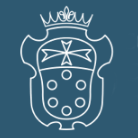Introduction
The Scuola Normale Superiore di Pisa is a public institution of higher learning located in Pisa, Italy. Although it is called a normal school, it is not a normal university in the traditional sense that trains teachers. Instead, it is a top institution dedicated to training senior scientific research talents for the country. It enjoys a high reputation in Italy and even internationally.
Overview
Student size: In the 2006-2007 academic year, the total number of students was 432, including 262 undergraduates. There are about 600 undergraduate and postgraduate (doctoral) students.
Number of faculty and staff: about 240 administrative staff, more than 150 professors and researchers.
History and establishment time
The Higher Normal School of Pisa was established in 1810 by a decree issued by Napoleon. It was originally a branch of the Higher Normal School in Paris, aiming to train teachers for the empire to educate citizens. In 1813, it began to officially recruit the first batch of students in liberal arts and sciences, and in 1846 it officially became an Italian aristocratic school.
School strength
Faculty strength: The school has 8 academicians of the National Academy of Sciences, more than 150 professors and researchers, and the ratio of professors to students is only 1:10, teachers can combine teaching and guidance to provide students with high-quality education and guidance.
Scientific research level: The school has strong scientific research strength. It invites internationally renowned scientists and Nobel Prize winners to give lectures, make academic reports and hold international academic conferences all year round. It actively participates in various scientific research projects and has achieved remarkable scientific research results in many disciplines, making important contributions to promoting academic progress.
International cooperation: Carry out extensive cooperation with many internationally renowned universities, actively promote international exchanges of students and teachers, continuously improve the internationalization level of the school, and expand students' international vision.
Institutional nature
Public university.
Educational philosophy
Advocate the development of personal intelligence and discrimination ability, focus on cultivating students' research ability, regard research work as an important part of talent training, adhere to small-scale, high-quality training of university undergraduates, doctoral students and postdoctoral students, and devote to Provide students with a good environment conducive to cultivating talents and improving the cultural and scientific research level of teachers and students.
Key laboratories and disciplines
Key laboratories: The school has many advanced laboratories and research centers, such as the Supercomputer Center, Cultural Relics Information Research Center, Medieval Cultural Center, Language and Phonetics Laboratory, Historical Archaeology Laboratory, Ancient Cultural Information Visual Art Laboratory, National Nanotechnology Center, Physics Laboratory, Neurophysiology Laboratory, Molecular Biology Laboratory, etc.
Advantageous disciplines: Liberal arts include ancient history and classical linguistics, Italian literature and language, art history and archaeology, history and ancient documents, philosophy, etc.; science covers mathematics, physics, chemistry, biological sciences, etc. These disciplines have a high academic status in Italy and even internationally.
Faculty
The school's teaching and research activities are mainly divided into two major departments: liberal arts and science.
Ranking
2025 Times Higher Education World University Rankings: 154th.
2023 US World University Rankings: 416th.
2022 Soft Science World University Rankings: 501-600th.
Expenses
All students of the Normal University go to school for free. In addition to the tuition fees of undergraduates being reimbursed by the school, they also enjoy a monthly tuition subsidy. The financial support for doctoral students includes allowances, academic activity funds, research funds, and free food and accommodation.
Campus Environment
Geographical location: Located in Pisa, a cultural and historical city in central Italy famous for the Leaning Tower of Pisa and the hometown of Galileo, it forms a unique university city with the ancient University of Pisa. It has a strong cultural atmosphere and provides students with a good learning and research environment.
Teaching facilities: The school has one of the largest open-shelf libraries in Italy and even in Europe, with more than 800,000 volumes of books and more than 4,000 magazines. In addition, the laboratories of various disciplines are fully equipped, providing strong support for the teaching and scientific research of teachers and students.
Living facilities: The school has 5 student apartments, 1 There are restaurants, and students can enjoy the school's existing learning and living resources for free. The living facilities around the campus are also relatively complete, which can meet the students' daily needs.
Cultural activities: Since 1967, the school has held seasonal concerts every year, and also held various short-term training courses, academic conferences, academic reports and other activities, which enriched students' extracurricular life and promoted academic exchanges and cultural dissemination.
-
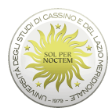
University of Cassino and Southern Lazio
-

University of Campania Luigi Vanvitelli
-
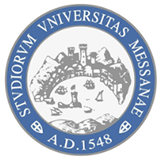
University of Messina
-
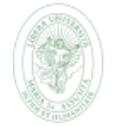
Libera Universita degli Studi Maria SS. Assunta di Roma (LUMSA)
-
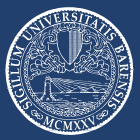
University of Bari Aldo Moro
-
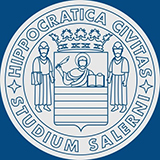
University of Salerno
-
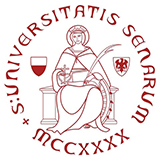
University of Siena
-
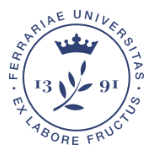
University of Ferrara
-
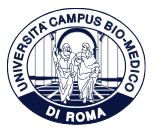
Campus Bio-Medico University of Rome
-

University of Genoa
-

Mesoamerican University
-

Istmo University
-

Mariano Galvez University of Guatemala
-

Regional University of Guatemala
-

Galileo University
-

Francisco Marroquín University
-

Rafael Landívar University
-

University of the Valley of Guatemala
-

University of San Carlos of Guatemala
-

Technological Institute of Tlaxcala Plateau
-

Golfo University
-

Technological University of South Sonora
-

Technological University of Huejotzingo
-

Tizimín Institute of Technology
-

Chilpancingo Institute of Technology

